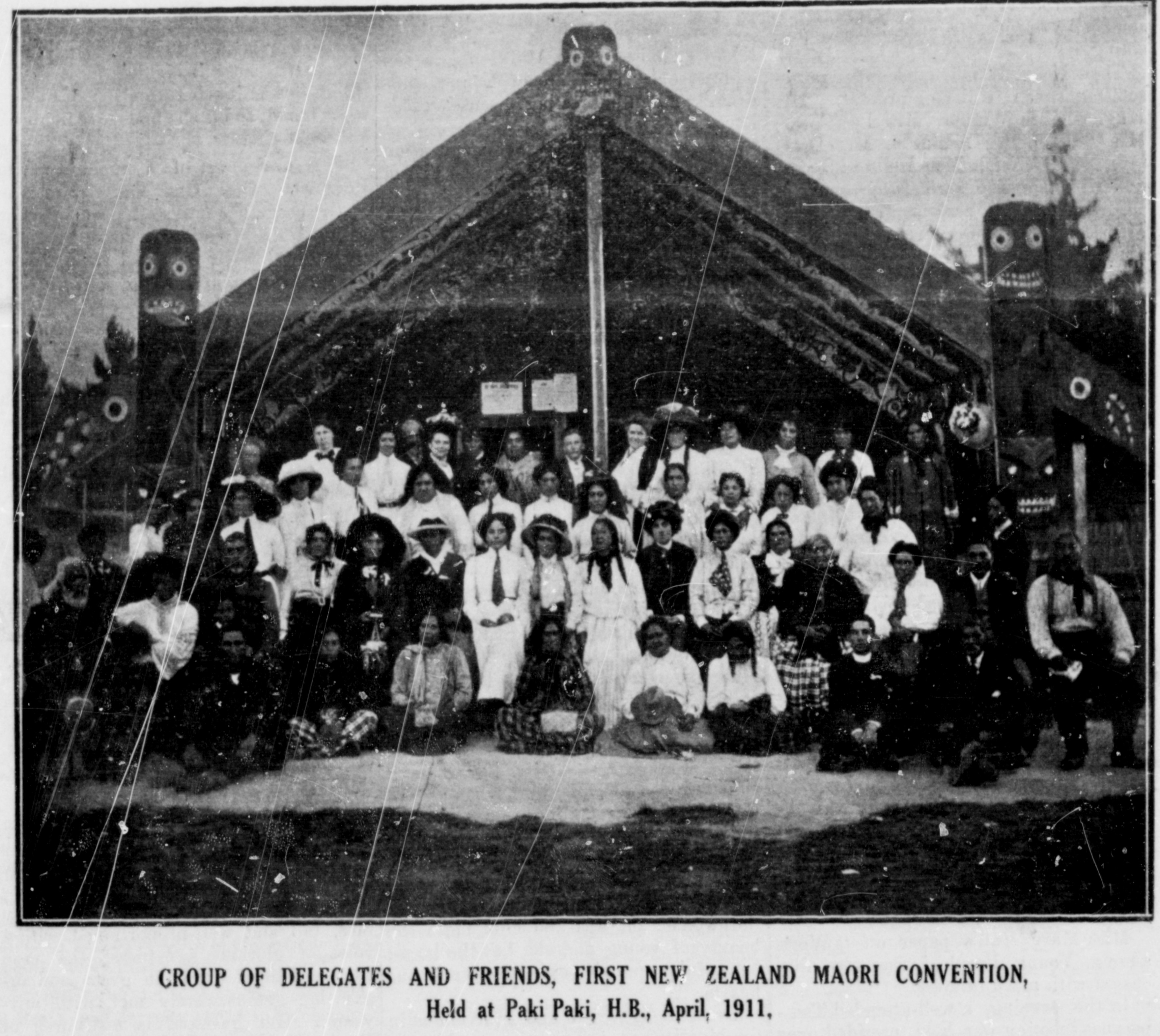|
Palmerston North–Gisborne Line
The Palmerston North–Gisborne Line (PNGL) is a secondary main line railway in the North Island of New Zealand. It branches from the North Island Main Trunk at Palmerston North and runs east through the Manawatū Gorge to Woodville, where it meets the Wairarapa Line, and then proceeds to Hastings and Napier in Hawke's Bay before following the coast north to Gisborne. Construction began in 1872, but the entire line was not completed until 1942. The line crosses the runway of Gisborne Airport, one of the world's only railways to do so since Pakistan's Khyber Pass Railway closed. In conjunction with the Moutohora Branch that ran north from Gisborne between 1900 and 1959, the line was originally intended to connect to the East Coast Main Trunk, described in 1875 as the North Island trunk line, but the difficult inland section between the Tāneatua Branch in the Bay of Plenty and the Moutohora Branch was never completed. The line has been freight only since October 2001, ... [...More Info...] [...Related Items...] OR: [Wikipedia] [Google] [Baidu] |
Railway
Rail transport (also known as train transport) is a means of transport that transfers passengers and goods on wheeled vehicles running on rails, which are incorporated in Track (rail transport), tracks. In contrast to road transport, where the vehicles run on a prepared flat surface, rail vehicles (rolling stock) are directionally guided by the tracks on which they run. Tracks usually consist of steel rails, installed on Railroad tie, sleepers (ties) set in track ballast, ballast, on which the rolling stock, usually fitted with metal wheels, moves. Other variations are also possible, such as "slab track", in which the rails are fastened to a concrete foundation resting on a prepared subsurface. Rolling stock in a rail transport system generally encounters lower friction, frictional resistance than rubber-tyred road vehicles, so passenger and freight cars (carriages and wagons) can be coupled into longer trains. The rail transport operations, operation is carried out by a ... [...More Info...] [...Related Items...] OR: [Wikipedia] [Google] [Baidu] |
KiwiRail
KiwiRail Holdings Limited is a New Zealand state-owned enterprise responsible for rail operations in New Zealand, and operates inter-island ferries. Trading as KiwiRail and headquartered in Wellington, New Zealand, KiwiRail is the largest Rail transport in New Zealand, rail transport operator in New Zealand. KiwiRail has business units of KiwiRail Freight, Great Journeys New Zealand and Interislander. KiwiRail released a 10-Year Turn-around Plan in 2010 and has received significant government investment in support of this in an effort to make KiwiRail a viable long-term transport operator. History Background Prior to the establishment of KiwiRail, rail transport in New Zealand has been under both public ownership, public and private ownership, private ownership. Government operators included the Ministry of Works (New Zealand), Public Works Department (1873–1880), New Zealand Railways Department (1880–1982), and the New Zealand Railways Corporation (1982–1990). Tranz Rail, ... [...More Info...] [...Related Items...] OR: [Wikipedia] [Google] [Baidu] |
Long Depression
The Long Depression was a worldwide price and economic recession, beginning in 1873 and running either through March 1879, or 1896, depending on the metrics used. It was most severe in Europe and the United States, which had been experiencing strong economic growth fueled by the Second Industrial Revolution in the decade following the American Civil War. The episode was labeled the "Great Depression" at the time, and it held that designation until the Great Depression of the 1930s. Though a period of general deflation and a general contraction, it did not have the severe economic retrogression of the Great Depression. It was most notable in Western Europe and North America, at least in part because reliable data from the period is most readily available in those parts of the world. The United Kingdom is often considered to have been the hardest hit; during this period it lost some of its large industrial lead over the economies of continental Europe. While it was occurring, t ... [...More Info...] [...Related Items...] OR: [Wikipedia] [Google] [Baidu] |
Kopua Railway Station
Kopua in New Zealand is now a sparsely populated area, immediately south of the border of the Manawatū-Whanganui and Hawke's Bay regions, with 150 people (2018 census) scattered over a meshblock. For two years it briefly flourished as a village, centred on a railway station on the Palmerston North–Gisborne line, opened on 25 January 1878,''Names & Opening & Closing Dates of Railway Stations in New Zealand'' by Juliet Scoble (2012) when it became the southern terminus of the line from Napier and Spit. Building to the south was delayed by the need to erect 3 large viaducts over the Manawatū River and its tributaries, so the extension to Makotuku didn't open until 9 August 1880. Kopua then declined until the station closed on 8 May 1977. Only a single line now passes through the station site and there are remnants of cattle yards. History The area was part of the Ngāti Raukawa rohe. In 1877 land was acquired for a railway ballast pit at Kopua. In 1879 Kopua was a cleari ... [...More Info...] [...Related Items...] OR: [Wikipedia] [Google] [Baidu] |
Waipukurau
Waipukurau is the largest town in the Central Hawke's Bay District on the east coast of the North Island of New Zealand. It is located on the banks of the Tukituki River, 7 kilometres south of Waipawa and 50 kilometres southwest of Hastings. History and culture Māori Central Hawkes Bay, where the town is located was settled by Te Aitanga a Whatonga, the descendants of Whatonga, grandson of Toi Kairakau. These were the Ngati Tara and Rangitāne peoples. In the mid 1500s the Ngāti Kahungunu invaded the area from the north and in the subsequent fighting drove the Rangitāne south into the Tahoraiti area (Dannevirke). Warfare continued through the 1600s until the time of Te Rangikoianake. His first child Te Kikiri was adopted by the Ngai Toroiwaho to be their chief - he had mana over the Waipukurau district.Aramoana Beach, Historical and Archaeological Report, Patrick Parsons, Central Hawkes Bay District Council, January 2001 - Waipukurau Library copy Fighting broke out agai ... [...More Info...] [...Related Items...] OR: [Wikipedia] [Google] [Baidu] |
Waipawa
Waipawa is the second-largest town in Central Hawke's Bay in the east of the North Island of New Zealand. It has a population of At the 2013 census, it had a population of 1,965, a change of 2.2 percent from the 2006 census. The town is located northeast of Waipukurau and southwest of Hastings, on the northern bank of the Waipawa River, a tributary of the Tukituki River. Waipawa was settled in the early 1860s, and the Settler's Museum exhibits many of these historical collections. It holds the main office of the Central Hawke's Bay District Council, and is New Zealand's oldest inland European settlement. Frederick Abbot was one of the early settlers and Waipawa was originally called Abbotsford, when the township was being sold in 1859, and there is still a children's home in Waipawa named Abbotsford. However, it was often shown as Abbotsford, Waipawa and Waipawa was more commonly used alone after the opening of the Waipawa railway station and Waipawa Mail in the late 1870s. ... [...More Info...] [...Related Items...] OR: [Wikipedia] [Google] [Baidu] |
Te Aute Railway Station
Opapa (or Te Aute) railway station is a preserved station, probably dating from 1896, on the Palmerston North–Gisborne Line in Hastings District of Hawke's Bay, south of Hastings in New Zealand's North Island. Although it closed in 1981''Names & Opening & Closing Dates of Railway Stations in New Zealand'' by Juliet Scoble (2012) and is now in a meshblock with a 2018 population of only 222, Te Aute is unusual in 3 respects: * It is now one of less than 40 wooden stations remaining on their original sites * In 1898 it was one of only 18 stations with a refreshment room * An official name change restored its original name of Te Aute, after being known as Opapa from 14 September 1913 to 12 June 1997. Nearby the railway climbs a steep bank and there is a radio mast, an old shop and a lake. History Name There has been some confusion around the name of Te Aute. On 8 December 1912 the name of the next station, Pukehou, was changed to Te Aute (Te Aute College is near Pukehou ... [...More Info...] [...Related Items...] OR: [Wikipedia] [Google] [Baidu] |
Pakipaki
Pakipaki is a pā kāinga ''village'' and rural community in the Hastings District and Hawke's Bay Region of New Zealand's North Island. The village is home to many Ngāti Whatuiāpiti hapū ''tribes'' represented by their three marae of Houngarea, Mihiroa, and Taraia. The village is also the home of the Hawke's Bay Catholic Māori Mission and displays the Foundation Stone for the Catholic Church in Hawke's Bay. Pakipaki is a Sacred Space in the Footsteps of Venerable Suzanne Aubert. It is located at the intersection of State Highway 2 and State Highway 50A, south-west of Hastings and Havelock North. History The modern pā kāinga ''village'' of Pakipaki was founded in the 1860s by the rangatira ''chief'' Urupene Pūhara with the first town plan laid out in 1862. The village was established on the banks of the Awanui River in the area known to be the settlement of the 16th century ancestress Hinetemoa. The full name of the village is the proverb Te Pakipakitanga-o-Hinetemoa. ... [...More Info...] [...Related Items...] OR: [Wikipedia] [Google] [Baidu] |
Clive, New Zealand
Clive is a small town, ten kilometres from the city centres of both Napier and Hastings in the Hawke's Bay region of New Zealand's North Island. It is close to the mouth of the Ngaruroro River. The town is part of the Hastings district. It was named (like many of the towns in the vicinity) after a prominent person from imperial India, in this case Robert Clive, better known as "Clive of India". The name was given by John Curling. The town of Clive is mainly rural, yet with the increasing number of people moving into Hawke's Bay, and Clive being at the meeting point of Hastings and Napier, new subdivisions are being built to accommodate the growing population. Clive is home to the Hawke's Bay Rowing Club who train on the Clive River. The Hawke's Bay Rowing Regatta is held on the first weekend of the year and was started in 1872. Demographics Clive had a population of 2,247 at the 2018 New Zealand census, an increase of 165 people (7.9%) since the 2013 census, and an increase ... [...More Info...] [...Related Items...] OR: [Wikipedia] [Google] [Baidu] |
The Vogel Era
The Vogel Era describes the history of New Zealand between 1873 and 1876, when the country adopted an immigration and public works scheme inaugurated by the colonial treasurer, then premier, Julius Vogel to develop the country and to relieve the slump of the late 1860s; to be financed by borrowing overseas. His "Great Public Works Policy" resulted in a large increase in migrants and provision of many new railways, roads and telegraph lines. The railway system developed from a few lines in three gauges to the start of a national network including the main line from Christchurch to Dunedin, though the narrow "Cape gauge" required later upgrading to increase the restricted height and weight limits. A Grand Go-ahead Policy Julius Vogel, the premier and colonial treasurer, appreciated that settlement was confined to coastal lands because of inadequate transport, and ("before Lord Keynes was born") propounded a "grand go-ahead policy" to dispel the slump with increased government expe ... [...More Info...] [...Related Items...] OR: [Wikipedia] [Google] [Baidu] |
Julius Vogel
Sir Julius Vogel (24 February 1835 – 12 March 1899) was the eighth premier of New Zealand. His administration is best remembered for the issuing of bonds to fund railway construction and other public works. He was the first Jewish prime minister of New Zealand. Historian Warwick R. Armstrong assesses Vogel's strengths and weaknesses: Early life Born in London, Vogel received his early education at University College School in University College, Gower St London. He later studied chemistry and metallurgy at the Royal School of Mines (later part of Imperial College London). He emigrated to Victoria, Australia in 1852, being editor of several newspapers on the goldfields, including the ''Inglewood'' ''Advertiser'' and the ''Maryborough and Dunolly Advertiser''. After an unsuccessful attempt to enter the Victorian Parliament in the Avoca district in August 1861 (he lost to James Macpherson Grant and Benjamin George Davies), he moved to Otago in October 1861, where he ... [...More Info...] [...Related Items...] OR: [Wikipedia] [Google] [Baidu] |








